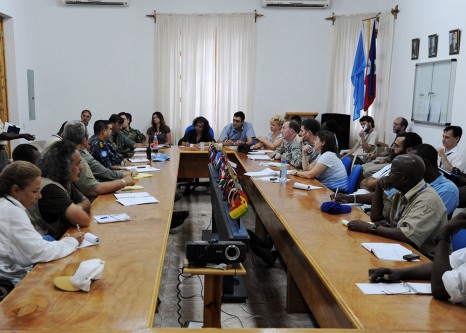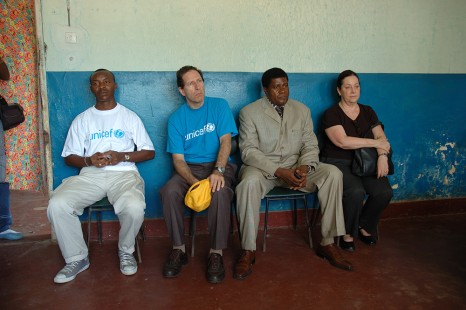Aid work – that is work for humanitarian and development agencies is attractive to men and women in all stages of life, after school or university, in mid-life or in retirement. Involvement in development and humanitarian relief promises meaningful and challenging work and provides opportunities for ‘making a difference’.
Aid work encompasses a wide range of paid and unpaid work. Many aidworkers start out as volunteers in order to gain overseas experience, to prove themselves in challenging conditions and to develop networks that are highly important in a sector that is characterised by short contracts and high turnover. Aid work requires mobility and flexibility, since positions frequently need to be filled at very short notice. This requires compromises both from the perspective of the organisation which might not find the ideal candidate and from the applicant who might have wished to find work in an East African country but finds herself in the Middle East – or vice versa. The necessity to hire the best available candidate thus opens up opportunities for newcomers to ‘Aidland’. I use this shorthand term to cover the wide range of work opportunities in aid organisations including volunteers, consultants, staff on longer and shorter contracts, working in their own country or abroad, in head, regional or field offices.
Aidworkers are boundary-crossers not only geographically, but also with respect to transferring skills from the private sector to aid organisations, for example work experience in commercial logistics, management or public relations. This influx of professionals is part of the professionalisation of aidwork. However, Aidland has always encompassed a wide variety of skilled professionals – medics, engineers and nutritionists to name just a few. Professionalisation also refers to a variety of codes and standards that were developed and introduced in the last two decades and more recently integrated in the Core Humanitarian Standard on Quality and Accountability (CHS).
The population of humanitarian aidworkers is continually growing. Parallel to the proliferation of humanitarian crises and growing budgets, a number of humanitarian studies programmes have been established and a veritable gap year industry has emerged which provides newcomers to aid work with field experience. At the same time, lives of aid workers are increasingly at risk as the number of aidworkers who have been kidnapped or killed in recent years has steadily grown. Moreover, people working in aid give up job security and risk de-skilling, mobility affects the family planning and can jeopardize relationships, furthermore diseases and attacks can make the work dangerous.
So what attracts people to aid work? According to the interviews with aid workers that I conducted between 2004 and 2013, there is a whole range of motives. There is the desire to ‘make a difference’ and to ‘give something back’ by helping those who are in need and less privileged. However, equally important is the fact that aid work is perceived as ‘challenging’, respondents sought out difficult assignments that allowed them to learn and grow. Given the predominance of fixed-term positions and limited career opportunities within aid organisations, frequent job changes are as much a structural requirement of pursuing a career in Aidland as well as a preference of people working in aid who are interested in new challenges and experiences. Lastly, working overseas, thus getting to know a range of countries (and conflict areas) off the tourist circuit and working in international and inter-cultural teams is a further attractive aspect. Respondents from high(er) income countries described the encounters with team members and with the recipients of aid interventions as ‘authentic’ and ‘real’ and contrasted it with everyday life and careers in their home countries. Aid work thus offers opportunities for self-realization and personal growth that were missed in ‘normal life’.
This contrast between Aidland and ‘normal life’ is much more prominent for aidworkers from high(er) income countries who represent a small minority of the aid worker population but the vast majority of those in leadership positions. Thus, while aidworkers are engaged in addressing the symptoms of global inequality, these inequalities are reflected within aid organisations in which international and national staff are differently positioned. For example, language skills, job experiences and academic training play a different role for national and international staff. Language skills are of great importance in the context of international teams and thus offer access to jobs. (Native) speakers of English can expect that team members will speak English or that an interpreter is at hand, they can be engaged in capacity building without speaking the local language. The careers of national staff of international aid organisations are often based on language skills (often English, even in organisations such as Medecins sans frontiers/Doctors without Borders). The salaries for international and national staff differ significantly. Furthermore, (university) educated national staff find themselves supervised by international staff who have no prior experience or training for this particular position and confronted with a lack of career opportunities in aid organisations.
Not surprisingly, some national staff members embark on international careers. However, the ‘brain drain’, that is leaving the home country for an overseas career, is often only temporary and undertaken with the intension to gain political and international capital necessary to improve the living conditions in the country of origin. Aidworkers from high(er) income countries in contrast seek to make ‘a difference’ by leaving their country of origin and implementing programmes in other countries.
The situation might change as some aid organisations have realised that more career opportunities need to be given to national staff and ActionAid and Oxfam have already or consider to move head offices to Asia and Africa, Medecins sans Frontieres has opened branch offices in Brazil and South Africa and the international NGO EveryChild transformed to a network of national NGOs. Furthermore, the newly established Humanitarian Leadership Academy seeks to empower communities to become more resilient. A shift towards national staff – also related to increasing risk for aid personnel and shrinking aid budgets – may limit job opportunities for recent graduates of humanitarian studies programmes. However, there are still plenty of opportunities to engage in global social justice – for example through (social) work and advocacy for migrant workers, refugees and asylum seekers or trade politics of high-income countries.
Silke Roth is a sociologist and author of The Paradoxes of Aid Work. Passionate Professionals (Routledge 2015).


